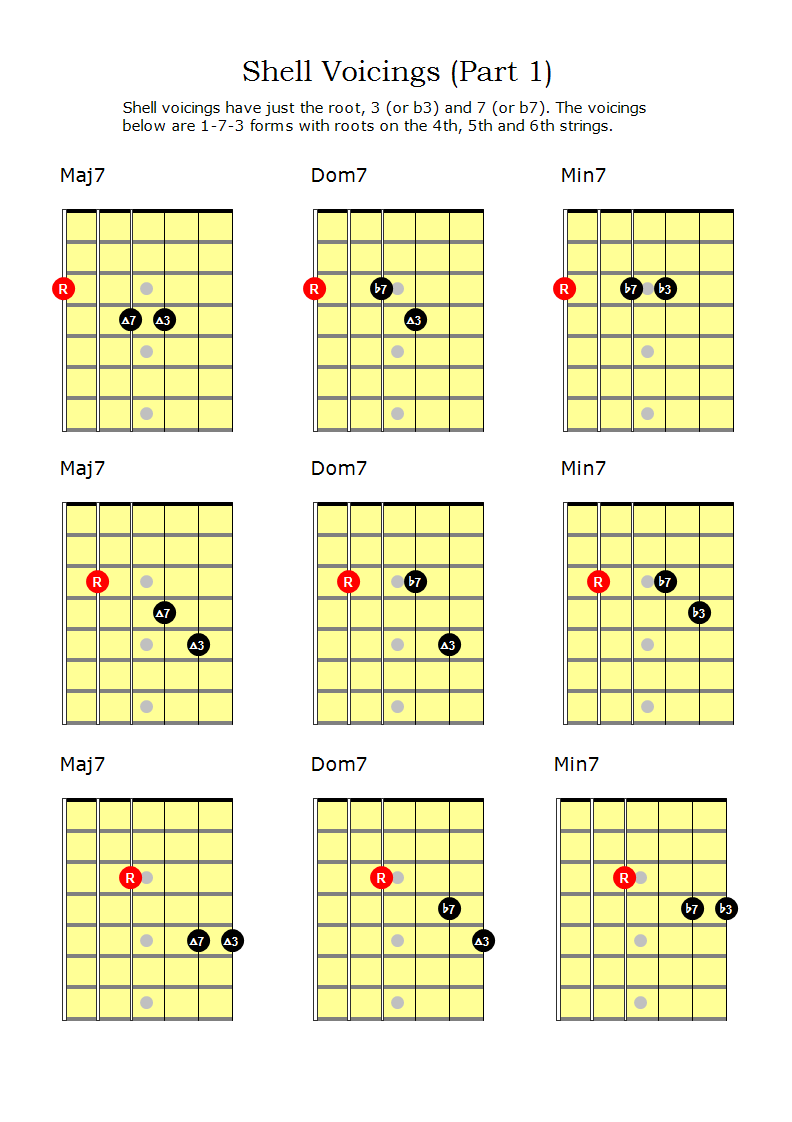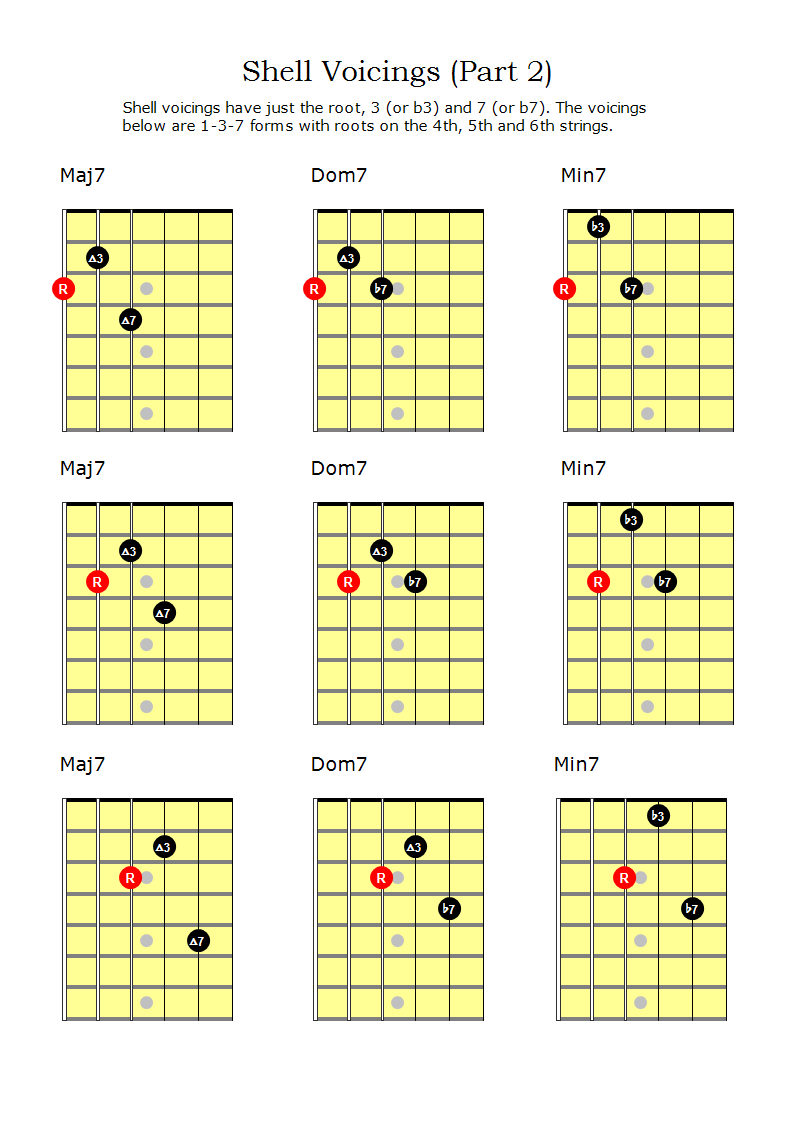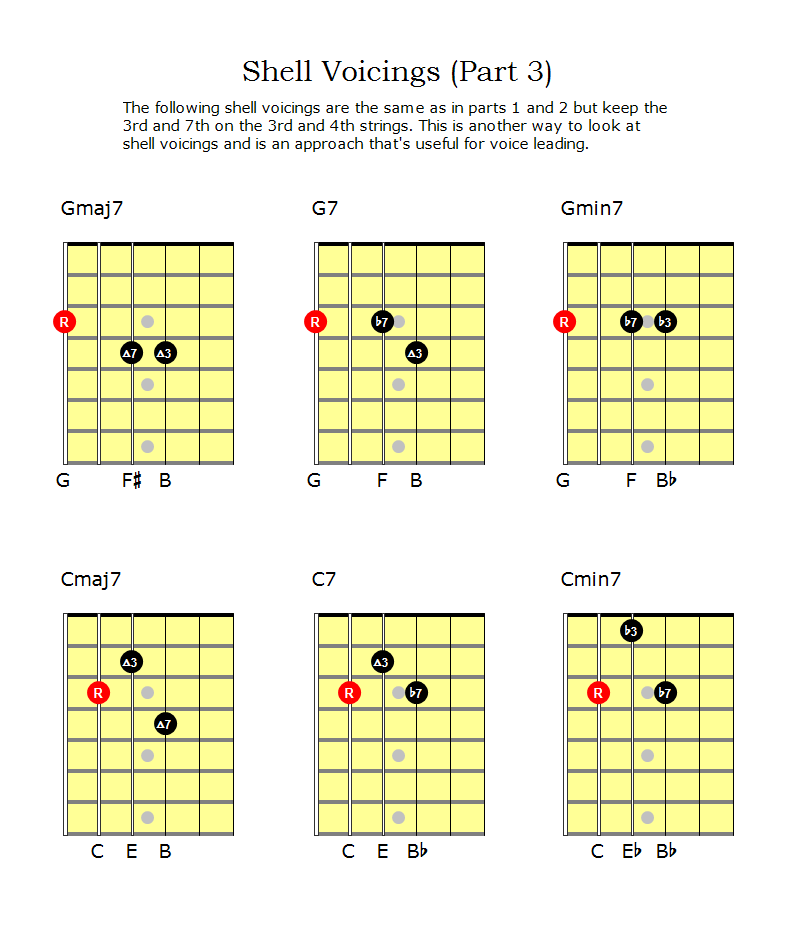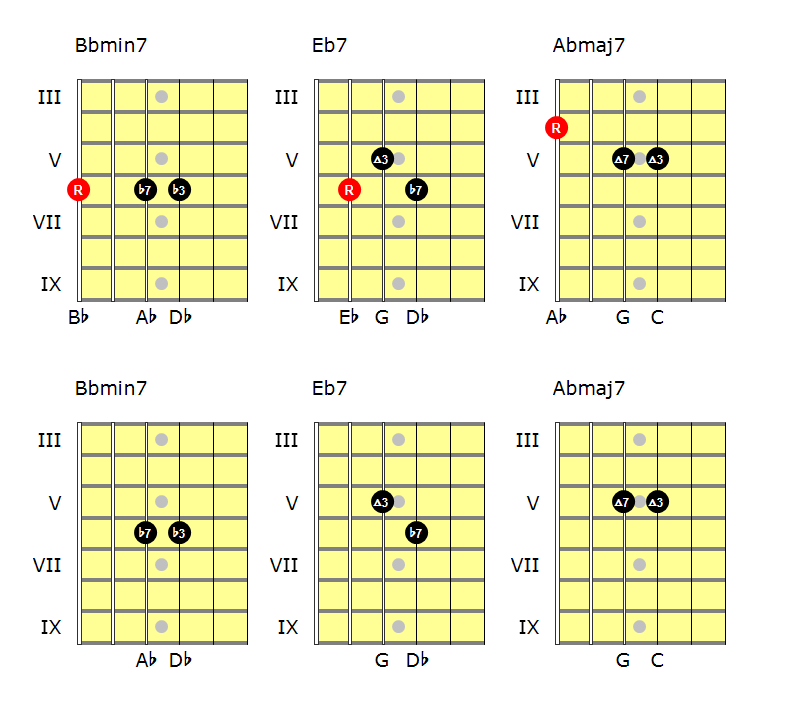There’s plenty of information out there on shell voicings for the guitar so this post is really just an aide-memoire for me covering the basics. Maybe you will find it useful too.
What is a shell voicing?
A shell voicing is a minimal chord voicing that contains as few notes as possible but which still conveys the overall harmonic character of a chord. This usually boils down to 3 notes:
- The root which identifies what the chord is.
- The 3rd which conveys the major or minor character of the chord.
- The 7th for flavour.
You could drop the root – leaving only the 3rd and the 7th – and you would still be able to hear the general harmonic character of the chord.
Later in this post there are some basic shapes for shell voicings. The examples all contain the root in the bass – so no inversions – which is common when dealing with shell voicings. By keeping the root in the bass we end up with 2 options for the order of notes in the shell voicing:
- Root, then 7th, then 3rd (1-7-3)
- Root, then 3rd, then 7th (1-3-7)
By combining 1-7-3 and 1-3-7 forms you can efficiently follow chord progressions without having to move around the guitar neck too much. There will be examples of this later.
How are shell voicings useful?
Well firstly, shell voicings are compact and comparatively easy to learn and play. I like that!
Shell voicings can be considered basic building blocks which can be used to derive other extended chord forms (e.g. 9th, 11th). If you know a shell voicing by adding just one more note can derive nice jazzy extensions.
Shell voicings can be useful in a band context because they leave space for other instruments to occupy certain frequency ranges. Try dropping to root for very minimal chords that still contain the essential harmonic quality.
Shell voicings for guitar
1-7-3 forms
The following shapes for shell voicings are in the 1-7-3 form and have root notes on the 6th, 5th and 4th strings. I find these the most recognisable shell voicings being subsets of the notes used in common major 7th, minor 7th and dominant 7th grips.

1-3-7 forms
The next examples are in the 1-3-7 form, again with root notes on the 6th, 5th and 4th strings.

Combining 1-7-3 and 1-3-7 forms
Now you’ve got 1-7-3 and 1-3-7 forms you can start to combine them. This allows you to move through a chord progression keeping the 3rds and 7ths close together on the fretboard, something that is very useful for voice leading etc.
The following examples – although not shown in a musical context – show how you can use 1-7-3 forms with roots on the 6th string and 1-3-7 forms with roots on the 5th string. Note how the 3rd and 7th degrees stay on the 3rd and 4th strings.

We can apply this idea to a simple ii-V-I progression. Note how, if we omit the root notes, the 3rd and 7th notes on the 3rd and 4th string change one at a time giving a sense of melody through out the progression.

That’s it! The basics of shell voicings.

Shell voicings for 7th,ok,but how about 9th 11th 13th shells?
How to create 9th 11th 13th shells
in order to “contain the essential harmonic quality” of this chords?
My understanding is that shell voicings contain the root, 3rd and 7th degrees. If you want to add 9th, 11th or 13th tonalities you do that by extending the shell voicing, in other words adding an extra note to create a 4 note chord. That’s why shell voicings are useful – they are a great framework for creating other chords. You could drop the root and start with just the 3rd and 7th so when you extend the chord you still only have 3 notes. That’s my understanding anyway. I’d be interested to hear of other approaches.
Hm…let’s try,let’s say the c Ionian scale cdefgab. Now we’re creating a fully extended chord c e g b d f a – Cmaj13 right? But we have only six strings on guitar so we need to remove the least important sounds. c e g b d c e g b d f c e g b d f a Perfect 5 drops first we transform c e g b d into c e x b d but if we play c e d chord,it sounds like Cmaj9 without b? Next is (c e g b d f)11th into (c… Read more »
Incredibly helpful ! Thanks !